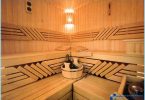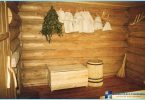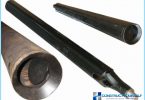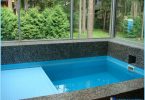The contents
- The chimney of the brick
- Asbestos cement flues
- Stainless steel & galvanized steel pipe
- Furanflex
- Steel flue stainless steel
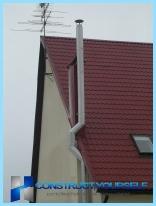
What is the condensate? ↑
Condensate is a resinous liquid, which is due to regular exposure to cold temperatures turns into condensation settling on the internal walls of the pipe.
When flue gases pass through the channel, they gradually lose their original temperature, whereby they are water vapor remains on the walls, turning into a liquid. When it is mixed with fuel and combustion products begin to form acid (e.g., sulfuric, hydrochloric, nitric and others).
Modern gas heating boilers have lower temperature exhaust gases and periodic disconnection. During the walls of the chimney are cooled in the direction from top to bottom. When cooling gases to a temperature of 45-60 degrees condensate begins to form. In smooth stainless steel tube the fluid is flowing down in pipes with rough inner surface (e.g. brick) the liquid penetrates into the wall. As a result, the chimney is gradually destroyed.
In most cases condensation occurs due to:
sediment;
- the sudden drop in temperature;
- poorly closed outlet;
- low temperature outlet vapor;
- cold pipes;
- wet or damp fuel;
- incompletely burned fuel;
- clogging of pipes;
- various violations in the construction of the device;
- high difference of internal and external temperatures;
- problems with traction.
Normal traction is provided by, primarily, due to dry fuel. This allows the device to be quickly and thoroughly warmed, that will minimize the risk of any sediment. In addition, you should very carefully choose the wood. For example, too resinous, regardless of the quality of drying, will cause resinous deposits. For this reason, to heat your home it is best to choose those wood that is well dried and do not contain a large quantity of resin.
To completely eliminate condensation in the pipes gas boilers, unfortunately, it is impossible, only to reduce its quantity. To achieve this, you need to choose the right design and material of the chimney. The upper part of the chimney is thoroughly warmed, which will reduce the time it cools down.
Requirements for the design of the chimney ↑
The chimney must be vertical, dense and without ledges. If you still have the slope of the flue, it should be no more than 30 degrees, the horizontal distance should not exceed one meter. In addition, the cross section of the channel must be the same along the entire length. Due to the observance of all these requirements thrust will be much better, and the amount of condensate will be significantly reduced.
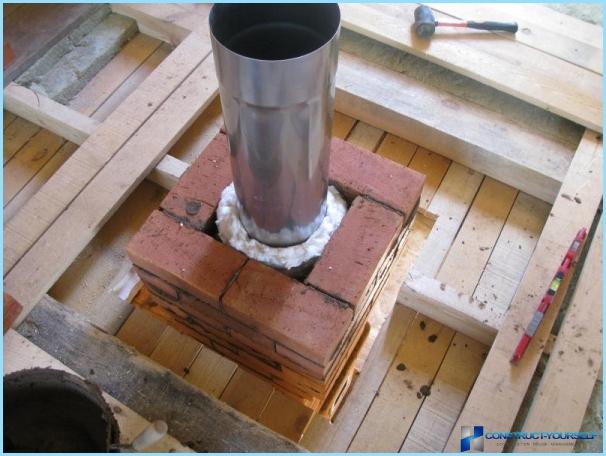
Types of chimneys ↑
When building a house should determine in advance what the design of the chimney will be best suited to the chosen type of furnace, because if the old chimney will have to change to a new one, you may need to conduct major repair work.
The chimney of the brick ↑
It is characterized by good traction, high quality heat-accumulation, the ability to retain heat for a long time. But the brick when used as the main material for chimneys is considered one of the worst, as near chimneys, condensation can form due to low temperature, long heating pipe, certain climatic conditions (e.g., periodic freezing and thawing pipes in the winter). The process of destruction of the brick will occur very quickly, as this material is very well absorbs a moisture. The walls will get wet, interior trim will come in a state of disrepair and the top of the tube may simply fall apart. It is recommended to use inserting a sleeve in which the inner part of the chimney is inserted into a special channel of stainless steel.
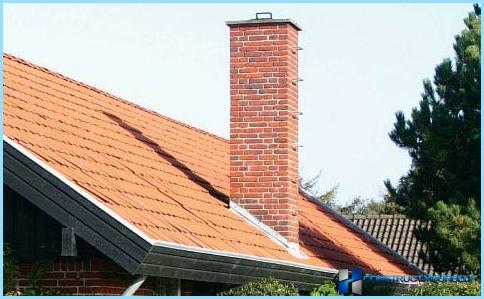
Asbestos cement flues ↑
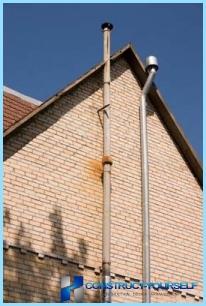
The disadvantages of asbestos cement chimneys are:
- bad tightness of joints;
- the possibility of installation of pipes only on the vertical sections of the chimney;
- high level of condensate absorbed by the walls of the chimney;
- difficulties in carrying out installation works due to the large length and weight of the chimney;
- the lack of resistance to high temperatures, causing the asbestos cement pipe can burst and explode;
- the complexity of connecting the boiler, as is required when connecting the tee trap and manhole cleaning.
Steel and galvanized pipe ↑
Effects of condensation can rust in a very short time. On average, the lifetime of steel pipes up to 3 years, and galvanized – not more than 4.
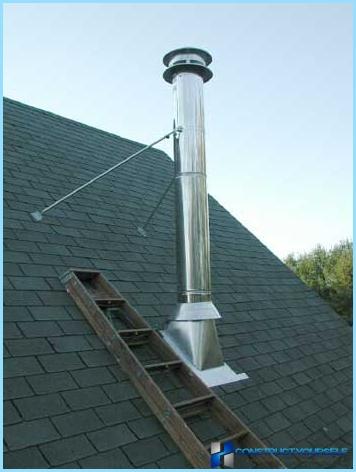
Furanflex ↑
Used in the manufacture of plastic, reinforced with high-strength fibers. Due to this, the pipes from this material have a high level of resistance to condensates, low thermal conductivity, perfect for use at temperatures not exceeding 200 degrees.
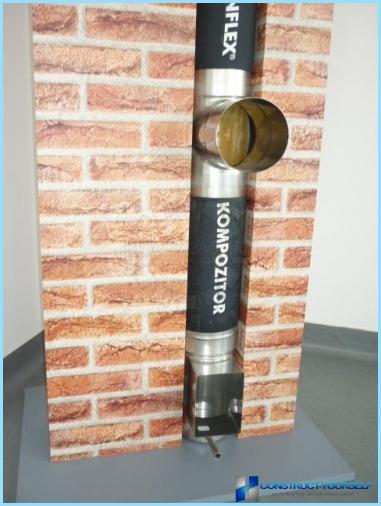
Steel flue stainless steel ↑
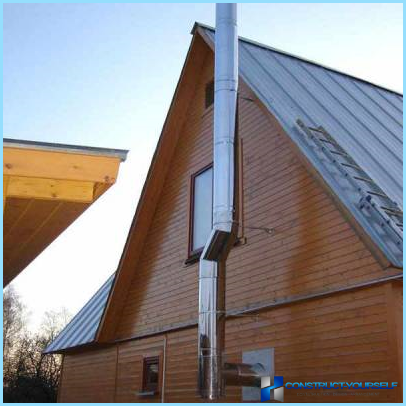
Steel chimneys have a large number of advantages:
- tightness;
- high level of fire safety (if in compliance with all rules of operation);
- easy to use;
- good traction, which is provided by a circular section and smooth surface.
Elimination of condensate ↑
Timely elimination of condensate – employment, faced by every owner of a furnace, fireplace, etc. the Main solution to this problem is the use of the trap is enlarged with a special collection of waste. In this case, all work boil down to remove the condensation collector and clean the chimney.
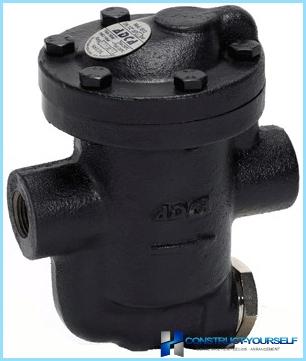
Other ways to reduce condensation include:
- The careful use of dried fuel of high quality.
- Elimination of air suction by closing vents or sealing.
- The insulation of the pipe that will allow you to minimize the deposition of moisture on the walls.
- The temperature at which the exhaust gas temperature would be less than 100 degrees. This requires the installation of a special channel.
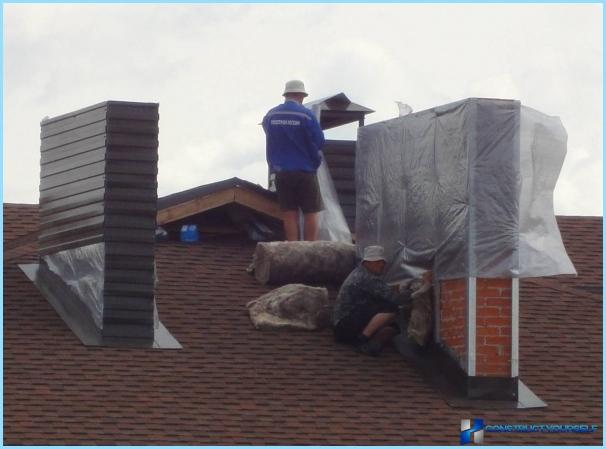
You should also check the entire structure of the furnace and, if there are any defects, eliminate them. It should be noted that special attention should be given various additional devices that may have a positive effect on one function, but negatively to the other.
Perhaps the most favourable solution for the elimination of condensate in the chimney, it is possible to consider equipping construction with acid resistant stainless steel channel, complemented by collection and trap. Installation works are characterized by lightness, simplicity and fast lead times.

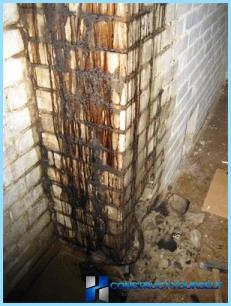 sediment;
sediment;